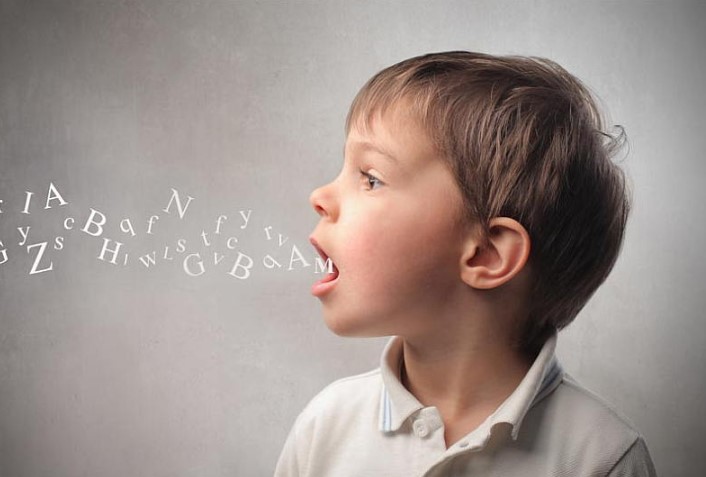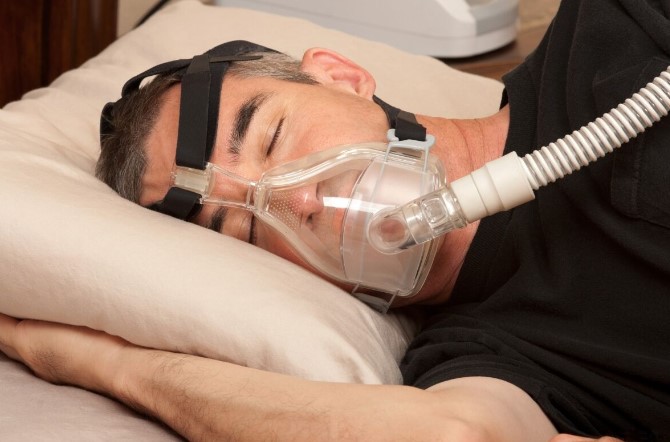Three bills deal with children’s mental health. Here’s what they would do.

Considered one of the top issues in the state Capitol this year, the children’s mental health crisis in Connecticut and elsewhere has spurred several proposals now under consideration by lawmakers.
Although the system needed improvements before the pandemic, experts say that health providers have seen a dramatic increase in kids seeking emergency psychiatric care over the last two years.
The number of children and teens waiting in emergency departments for inpatient psychiatric beds in Connecticut grew from 26 to 56 between Feb. 1 and 21, according to the Connecticut Hospital Association. An average of 38 children waited for care on any given day during that time — of those 38, an average of 31 were between 13 and 17 years old, and 7 were 12 years old or younger.
Legislators have hosted forums with behavioral health professionals, state officials and child experts to discuss how the children’s mental health crisis has led to overwhelmed pediatric emergency rooms. They also have examined what improvements to behavioral health services could be made in school districts and surrounding communities throughout the state.
During a hearing last month, Dr. Manisha Juthani, Connecticut’s public health commissioner, echoed concerns about the need to improve accessibility in the behavioral health care system so families don’t feel like emergency departments are their only choice.
“In the last several months, we still do see problems,” Juthani said. “It is throughput from all the different areas of health care services and behavioral health that can be provided in the outpatient setting to try to prevent children from ending up in the emergency department.”
Senators have raised two bills aimed at addressing children’s mental health in schools and across early childhood broadly. Legislators in the House have also floated a sprawling proposal that ties in funding and services across medical centers, educational facilities and the community.
Here’s a look at what’s in the measures.
What’s in Senate Bill 1?
Lawmakers in the Senate have divided their efforts on children’s mental health and other related issues into two proposals. Senate Bill 1, under consideration by the Education Committee, focuses on resources for children in schools, while the second proposal (Senate Bill 2) targets services across early childhood.
Senate Bill 1 features 23 different sections and covers a range of priorities. It would require the state Department of Education to send a survey to boards of education throughout Connecticut asking how many social workers and school psychologists there are in each district; whether those employees work for one or multiple schools; what geographic area they cover; and how many students they have worked with during the past five years. School boards would have to complete and return the survey. The information would be used to calculate the school-to-social worker and school-to-psychologist ratios.
The bill would create a grant program to help schools hire and retain social workers and psychologists. School officials must submit proposals for how they would spend the money (i.e., how many social workers and/or psychologists they would hire, what those employees would do, etc.). Priority would be given to districts with high student-to-social worker (or psychologist) ratios, or where there are high demands for mental health services.
The measure would also launch a task force to combat ableism, or the discrimination or social prejudice against people with disabilities. The group would find opportunities to educate students about disability and come up with ways to incorporate those teachings into social-emotional learning sessions.
The bill would allow pharmacists and providers who prescribe medication to dispense naloxone to school officials and provide training on how to use it. It would also give the education department the power to issue a “human services permit” to any applicant with a Bachelor’s degree in social work, psychology, sociology, human services or equivalent from an accredited university and who has a minimum of four years’ work experience (or one year of experience and two years of specialized schooling in the subject). The permits are good for three years and allow workers to provide mental health services in schools.
To read the entire bill, click here.
How much money is involved?
Some provisions of the bill have dollar figures attached. For example, the measure would set aside $60,000 for the education department to hire someone to administer the grant program, $30,000 for a worker who would oversee a new minority teacher scholarship initiative and $21.24 million for school-based health centers to expand mental health services. But other components of the legislation, including the grant program, still do not have funding estimates. The state’s non-partisan Office of Fiscal Analysis typically attaches a fiscal note to the bill later in the session that details all of the costs.
How does it differ from the other bills?
Though still a lengthy proposal, Senate Bill 1 centers on mental health efforts in schools, providing resources and training to school districts. Legislators say part of the reason the mental health priorities for children were split into three bills is because there were too many pieces for a single measure.
“If we were to put all of the things that we need in one bill, it would be a 500-page bill,” said Sen. Saud Anwar, an acting co-chair of the Public Health Committee. “That’s the reason we have to separate out those components, to spread out the responsibilities and look at the opportunities.”
What’s in Senate Bill 2?
Senate Bill 2 features 45 different sections, covering myriad issues. Included in the measure is a requirement that the state Department of Children and Families operate mobile crisis centers around the clock; a wage supplement grant for child care workers; and a mandate that the state’s Medicaid program, known as HUSKY, reimburse for services provided by social workers employed under psychologists and licensed clinical social workers.
It would create a special fund to address social determinants of mental health, the social factors — such as housing instability, a lack of access to healthy food, poor education, poverty, racial discrimination, unemployment and adverse early life experiences — that influence a person’s mental health. Families dealing with these problems could apply for financial support. The fund would be overseen by DCF, which would set the criteria for dispersing the money.
The bill also includes an optional tax abatement for property taxes paid by child care centers, establishes a youth transitional housing fund, requires the Department of Social Services to study how child care employees can get assistance with their medical costs and forms a Children’s Health Behavioral Cabinet, which will recommend improvements in behavioral health policies and delivery.
Read the entire bill here.
How much money is involved?
Like Senate Bill 1, some components of this measure have funding attached, but there is not yet an overall fiscal note. The legislation proposes $20 million for emergency grants to child care centers, $6 million for mobile crisis response in 2023 and 2024, and $2 million for the social determinants of mental health fund in 2023 and 2024.
How does it differ from the other bills?
Senate Bill 2 addresses mental health and related issues across early childhood more broadly.
What’s in the House bill?
The lengthiest of the three large bills, the mental health proposal offered by lawmakers in the House of Representatives is 103 pages and comprises 73 different sections. It would allow license reciprocity for out-of-state mental health providers in order to expand the workforce; establishes an education loan forgiveness program for qualifying employees in the mental health field who serve children and teenagers; sets up a grant program for hiring and retaining children and adolescent psychiatrists; and sets aside money to increase staff in Intensive Outpatient and Partial Hospitalization programs.
The bill would create and fund a new position in the state education department dubbed the trauma coordinator to oversee best practices for teachers, administrators, coaches and other school staff. It also would mandate that schools adopt a trauma-informed truancy intervention model that considers the refusal of school due to mental health problems.
The proposal also requires individual and group health insurers to cover evidence-based services used to treat mental and behavioral health conditions in children and teenagers.
Read more about the bill here.
How much money is involved?
Like the other proposals, the House bill is awaiting a fiscal note with funding estimates. Few initiatives in the current draft include funding amounts. The bill does suggest putting aside $150,000 for the Department of Public Health for grant-in-aid to a children’s hospital that will coordinate a mental and behavioral health training and consultation program for pediatricians.
How does it differ from the Senate bills?
The House bill includes numerous priorities not outlined in either Senate bill, though there is some overlap. For example, both the House bill and Senate Bill 1 include a proposal for a grant program for school districts to hire and retain social workers and psychologists (the House bill notes that trauma specialists, behavioral technicians, and board certified behavioral analysts may also be hired with the grant funds).
Rep. Liz Linehan, D-Cheshire, a key proponent, said some of the bills may be updated or amended before being voted out of committee. Senate Bill 1 and the House bill have not yet been voted on; Senate Bill 2 was voted out of committee earlier this month.
How likely are the bills to pass this year?
Legislative leaders and supporters have expressed confidence that all three bills will succeed, calling the issue one of their highest priorities this session.
“I’ve received many, many calls — many anguished calls — from parents and families sharing stories of the mental and emotional pressures they have been under since COVID burst on the scene two years ago, most [regarding] their children or their grandchildren,” Senate President Pro Tem Martin Looney, D-New Haven, said at an event in February announcing the bills. “We owe it to the next generation of Connecticut to make sure we respond to that by providing essential services for mental health, and especially for young people.”
Anwar said the measures have broad backing.
“We are really hopeful, because almost all the legislators who have passion and concern [for children’s mental health] have their fingerprints on these bills,” he said. “And we have done it collaboratively.
“There’s an urgent and immediate need [to address] children’s behavioral health.”
What has the feedback been like?
The trio of bills drew a wide response, with hundreds of pieces of written testimony submitted and multiple public hearings held where people could testify virtually. Many groups and individuals spoke out in favor of the bills, while others raised questions or concerns about them. Some added suggestions for improvement.
Caroline Schweyer, a teacher in Shelton, wrote to legislators that students in her school have been struggling as a result of the pandemic.
“We have seen an increase in behavioral issues in school due to unaddressed emotional needs,” she wrote. “There is not enough mental health staff in the school to sufficiently support all students. Access to social-emotional learning and mental health resources will ensure that students in my school receive the emotional support that they need to be able to focus in my math classroom!”
Kathryn Scheinberg Meyer, an attorney who submitted testimony on behalf of the Center for Children’s Advocacy, said the children served by the organization face “far too many barriers” in accessing quality education and mental health services.
“The result? Push-out, in its many forms,” she said. “For our older clients, this looks like disengagement, discipline, school-based arrests, or even coercion into withdrawal. … For our youngest children, push-out often looks like frequent phone calls home, requiring parents to leave jobs and scramble to pick their children up early because the school cannot or will not deal with the child’s challenging behavior.
“The timing could not be more critical to strengthen support for children, families, educators, and mental health providers alike.”
Dilani Perera, chair of the Counselor Education Department at Fairfield University, recommended that lawmakers revise the House bill to include licensed professional counselors and certified school counselors as “school mental health professionals” and to pay the registration fee and preparation costs for those counselors.
Officials with the National Association of Social Workers’ Connecticut chapter asked legislators to provide more context, including the extent of the employee shortage in Connecticut.
“There is a shortage of bilingual social workers and male social workers, but it is not clear to what degree there is a shortage of licensed social workers,” wrote Stephen Wanczyk-Karp, the executive director. “What there is a shortage of is adequate compensation, especially in the non-profit sector, which has led to difficulties in attracting licensed social workers for those employers who are unable to pay adequate salaries.”
Theodore Lane, a teacher at Great Oaks Charter School in Bridgeport, said the lack of mental health resources is an obstacle teachers face every day.
“I have noticed that students have a very hard time regulating how much they use their phones as an escape from stress since returning in person from quarantine,” he said. “Our school does not have adequate resources to support students in developing healthy coping mechanisms for when they are met with stress. This has without a doubt impacted the academic success of students in our building.
“Access to more funding would help our students bridge mental health gaps created by and during the pandemic.”







